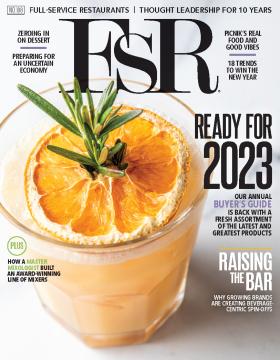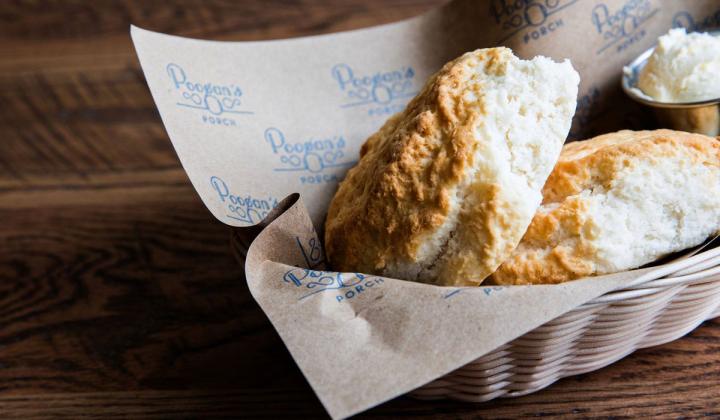
In an industry as competitive as foodservice, each year in business can feel like an enormous accomplishment. It’s been especially true as of late, given the tens of thousands of restaurants that were forced to permanently shutter; the vast majority being full-service independents.
While it’s been a struggle for all, legacy concepts have a different perspective. With histories spanning decades or even centuries, these restaurants have survived numerous hardships, from wars and natural disasters to recessions and food shortages. Because COVID-19 was unlike any crisis operators had previously faced, it may be easy to assume these older establishments were too rigid to adapt. But in truth, many benefited from their experiences as well as deep-rooted community ties and often loyal, long-time employees. Although nothing can guarantee survival, particularly in the face of such chaos, these 11 indies have the outlook and know-how to keep climbing.
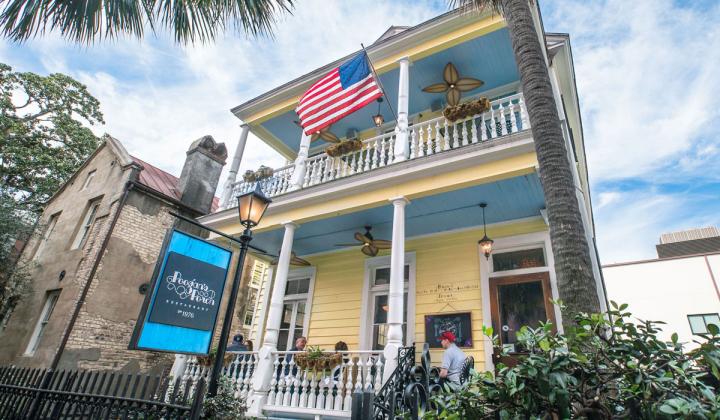
In squaring off against COVID-19, Poogan’s Porch could draw from not only half a century’s worth of economic ups and downs but also a much more personal experience. In 1991, a fire nearly ruined the Charleston, South Carolina, restaurant.
“When you consider that we had to navigate that particular event alone, you ultimately develop a wherewithal and resilience that only comes from experience,” managing partner Brad Ball says. “Our mentality is that no obstacle is too big to overcome—even COVID-19.”
When indoor dining was shut down last summer, Poogan’s Porch, like many full-service restaurants, implemented off-premises operations. But Ball quickly realized the model wasn’t sustainable for his particular business.
When South Carolina reinstituted dine-in service, first at half capacity in May 2020 and then full capacity in October, Poogan’s Porch reopened with operational modifications that followed state and National Restaurant Association guidelines. Ball says it was business as usual from that point forward, but November brought even better tidings when parent company Poogan’s Hospitality opened an entirely new concept, Poogan’s Southern Kitchen, in a nearby Charleston suburb.
The project, which had been in the works for three years, joins three other offshoots of the original property: Poogan’s Smokehouse, special events venue Poogan’s Courtyard, and Poogan’s Catering. So far the group has stayed within the greater Charleston area, but the latest concept could prove to be a growth vehicle. Ball says the brand is working on opening additional locations across the state in cities like Greenville, Rock Hill, and Columbia.
The metamorphosis of a legacy independent into a restaurant group and now potentially a multiunit brand hints at a possible course for other mom and pops. Ball sees restaurants of all sizes adopting best practices from one another—a shift the pandemic may have accelerated.
“There will always be a place for independents and chains alike. What we are seeing in the industry is a convergence of the two. Independents are acting more like chain restaurants by employing technology, buying practices, training programs, etc. that were once reserved for the deep-pocketed chains,” Ball says. “Conversely, chains are capturing the essence of independents with more bespoke offerings in unique settings.”
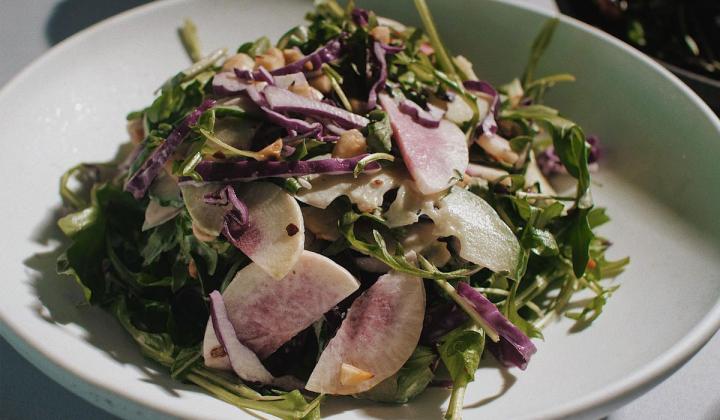
At Canlis, a strong legacy operation spanning three generations proved fertile ground for new business models. During the pandemic, the Seattle institution created nearly a dozen different services, including a burger drive thru, a drive-in movie theater, CSA boxes, bingo nights, a crab shack, and a bagel shed. Last fall, brothers Mark and Brian Canlis even started Canlis Community College, a six-week program featuring F&B classes, homesteading basics, and seminars on Seattle history and culture. “Students” could even buy Canlis-branded collegiate apparel.
“I think having a decades-strong culture helped us, [but] one’s history is not nearly as important as what someone decides to do today. Like everyone else, we took the pandemic one day at a time,” Mark Canlis says. “Adapting has become the pandemic euphemism for surviving.”
The restaurant also did its part to help others. At one point, staffers were delivering a thousand meals each night to quarantined homes in an effort to shed light on those who faced especially perilous circumstances. Canlis also raised $275,000 for charity.
Although the past year was especially rife with innovation, Canlis has never been one to rest on its laurels. The midcentury modern structure with floor-to-ceiling windows and panoramic views is still as dramatic today as it was more than 70 years ago, though the building has benefited from recent updates, including a bar expansion five years ago. The restaurant is also a perennial James Beard Award nominee across multiple categories. Most recently, it was a finalist for Outstanding Hospitality last year and won Best Chef: Northwest and Design Icon honors in 2019.
At press time, Canlis wasn’t quite ready to reopen, so instead it once again took a hyper-creative approach to continue serving the community—this time in the form of camp-themed experiences, from fine-dining yurts to barbecue around campfires to treehouse tasting menus.
Mark Canlis thinks adaptability is innate for many independents, and that’s why it’s important for them to trailblaze for the greater industry.
“I love a good corporation, but don’t expect to see them move as quickly as employees or guests need,” Canlis says. “This leadership will come from small business, independent businesses, family-run businesses. It will come from those with the courage and hope to fight for something better. That’s all of us little guys who can’t afford not to change.”
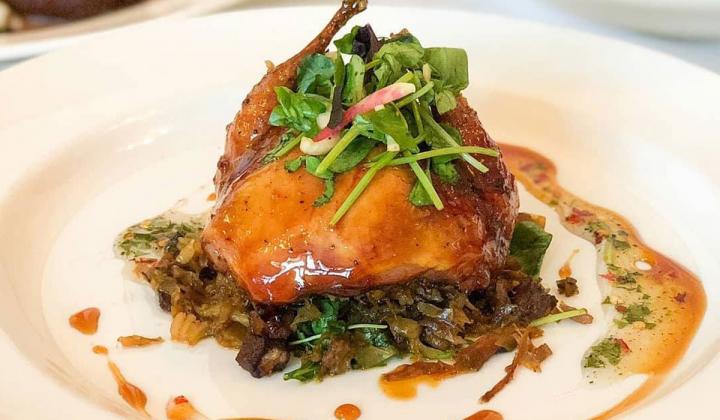
Over generations, Commander’s Palace has delighted tourists and Big Easy locals with its Old World charm, fine-dining service, and elevated Creole fare. It might seem impossible that such an inimitable experience could be transmuted in the time of COVID-19, but proprietors Ti Martin and Lally Brennan created several fresh outlets to ensure the bon temps kept rolling.
While Commander’s Palace was closed for dine-in business, it launched what has arguably been its most far-reaching initiative: virtual wine and cheese parties.
Each month, Ti Martin and Brennan, along with chef Megan Bickford and “wine guy” Dan Davis host two virtual gatherings, one local and one national. With themes centering on holidays and events like the Oscars, costumes, pets, and general merriment are encouraged.
“It’s given them a reason to have a little gathering and have some fun and dress up, and then we’ll have the winemakers and cheesemakers from all over the country,” Ti Martin says.
In the spring, Davis even hosted the program from Croatia while discussing Croatian wines. Companies have also started hiring out Commander’s Palace for private virtual events.
“I don’t know that anybody is doing it quite the way we’re doing it. People definitely do cooking demos—we do some of that, too—but this is literally a party where you happen to learn about wine and cheese,” Ti Martin says. “People are enjoying that, they just need a break.”
Commander’s Palace also partnered with Goldbelly to ship some of its most iconic dishes, including turtle soup and gumbo, nationwide. Ti Martin and Brennan thought it would be a nice offering for the holidays, but demand held strong even as dine-in business started to rebound.
When Commander’s Palace reopened last September, it also debuted Le Petit Bleu next door as a way to continue fulfilling to-go orders. The shop sells individual and family-size dishes, as well as pantry goods. The restaurant also partnered with two other women-owned New Orleans enterprises, El Guapo Bitters and French Truck Coffee, to create a signature line of cocktail mixers and a custom coffee and chicory blend, respectively. Both products are available for purchase at Le Petit Bleu.
With so many irons in the fire, the Commander’s Palace team has its work cut out—and they wouldn’t have it any other way.
“It’s a nice problem to have,” Brennan says.
“It’s true. We’re back to having really productive problems,” Ti Martin adds. “People ask how it’s going and I’ll say, ‘We’re as busy as the law will allow.’”
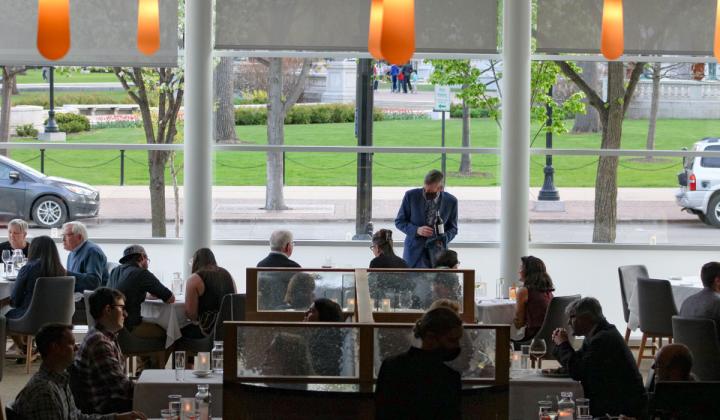
The pandemic forced many restaurants to rethink business as usual and integrate off-premises operations into their existing systems. That was the case for French-inspired, farm-to-table restaurant L’Etoile, but it wasn’t the most pivotal change spurred by the unprecedented events of 2020.
“The biggest—and most needed—adjustment to our operation was made to our tipping and pay structure as a way to address some outdated practices within our industry,” director of operations Helene Palau says. “We decided to switch to a tip-pooling system and address the pay inequality in the front of house versus back of house that has long been the status quo.”
Since reopening two months ago, employees have earned $12 per hour plus tips. If the combination of the two does not hit $15, L’Etoile fills the gap. Not only does the new policy ensure staff earn livable wages, it also gives the restaurant a major leg-up in the current labor crisis.
L’Etoile opted to stay closed for dine-in business longer than mandates required. Palau says it was an ongoing discussion, but the team ultimately decided that since a significant portion of the restaurant’s clientele wasn’t ready to return, they would wait. The reluctance to dine on-site had little bearing on guests’ enthusiasm to order dishes from L’Etoile.
“We had an overwhelming amount of support from our lifetime regulars throughout the past year, many of which were regular buyers of our Family Meals and purchased gift cards in support of our restaurant,” Palau says.
When the pandemic first began, L’Etoile quickly implemented in-person and curbside pickup through an online ordering platform. In addition to the family meals, it later created takeout-style tasting menus for special occasions like New Year’s and Valentine’s Day.
As Palau points out, the restaurant industry tends to draw creative individuals who perform well under pressure, and that’s been a boon over the last year. Its continual drive to improve and innovate will define L’Etoile, but for now, the team is happy to relish the moment as they readjust to dine-in business.
“It can be quite easy to only focus on the future and take the present for granted. Right now, we’re focusing on our teams and our guests and hoping to have a successful summer after a long year away,” Palau says
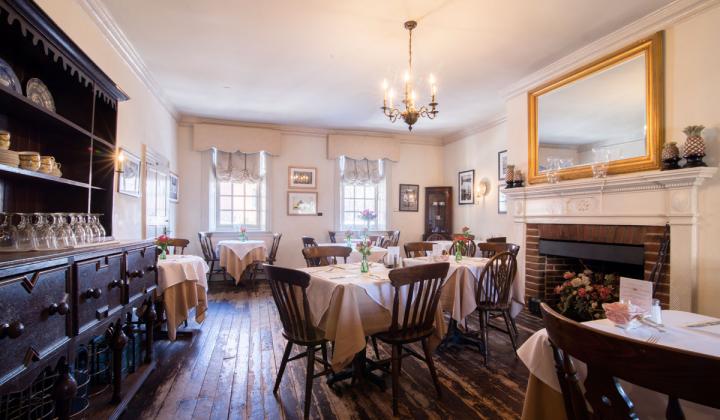
The building that houses Reynolds Tavern in Annapolis, Maryland, predates the Revolutionary War. For proprietor Marilyn Burge, this centuries-long legacy puts things in perspective.
“No matter what, this building will survive and will continue to serve the community. Is our chapter over? It certainly adds a little fuel to your fire that you want to be the one still standing at the door at the end of [the pandemic],” says Burge, who along with her husband, Wes, owns the restaurant.
Burge adds that she can’t help but think locals’ fond memories of historical building—whether as a restaurant or one of its other iterations—helped support Reynolds Tavern through the difficult days of COVID-19.
From the beginning, the Burges pursued as many resources and stopgap measures as possible; they attended every webinar the National Restaurant Association offered and negotiated with vendors, utility companies, and insurance providers. In terms of off-premises services, Reynolds Tavern pared down its menu to travel-friendly dishes, joined an online order–tracking platform, and offered free “on foot” delivery to locals.
“Independents are creative and in touch with their communities. We have certainly learned this year that, as corny as it sounds, we are all stronger together,” Burge says. “We are fortunate to be in an area with many of our staff that walk to work, and many customers that walk to dine with us or order curbside pickup.”
Reynolds Tavern also put a fresh spin on its afternoon tea with an interactive, off-premises program. It splurged on special packaging, staged photo shoots of the tea service, and promoted it on social media. Customers caught the enthusiasm and were soon sharing their own “quaran-tea” parties.
The pandemic also pushed the Burges to finally pursue a long-held goal of creating a winter wonderland. They bought garden domes last August, ahead of the rush that would come a couple months later. Even after the coronavirus is a thing of the past, Reynolds Tavern can utilize its biergarten year-round. Other pandemic-precipitated changes, like using QR codes instead of physical menus, will also stick around. For Burge, that’s all part of the growing process.
“We have to stay true to who we are and our concept, but we know we have to be flexible and realize we might not be returning to what we were,” she says. “This is frightening and exciting at the same time. It is like starting over.”
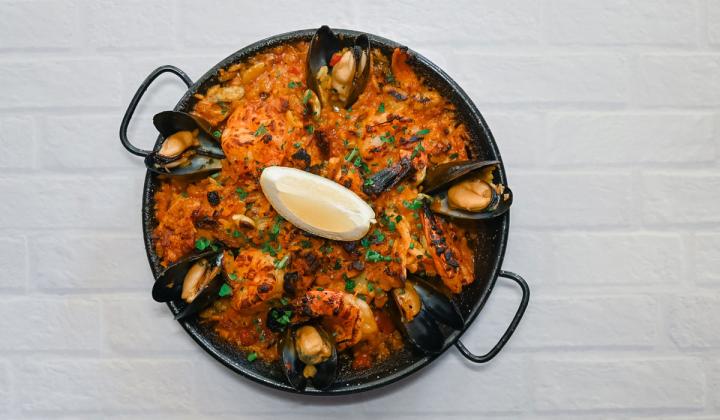
In light of the pandemic, menu expansion and innovation largely fell by the wayside in 2020. If restaurants added or tweaked items, it was likely to make them better suited for takeout and delivery. But for El Farol, the pandemic created a unique opportunity for the restaurant to branch out beyond its Spanish roots.
“We developed a new menu that adds some new Mediterranean small plates and brought in an Italian pizza oven so we can offer Neapolitan–style pizzas,” owner Rich Freedman says. “Customers’ preferences will continue to change over time, which means menus will have to change over time to meet those preferences.” It didn’t hurt that pizza has long been an off-premises favorite.
Just as its name (meaning “lighthouse” in Spanish) suggests, El Farol has been a beacon in the Santa Fe, New Mexico, community for nearly 200 years. Nevertheless, the team appreciates the importance of keeping with the times. When the previous owner put the restaurant up for sale in 2016, Freedman teamed up with then–general manager Freda Scott to purchase the property. The business partners brought in a new chef and renovated the building while preserving its bones.
Amid dine-in restrictions, El Farol turned its design focus outdoors by expanding patio seating. Freedman hopes it will become one of the city’s go-to spots for patio dining and private events.
True to its Spanish roots, the restaurant also boasts a long history of live flamenco, featuring dancers from the National Institute of Flamenco. Freedman expects to bring the tradition back later this month. But even when these weekend events were put on pause, guests still showed their support for El Farol, and Freedman knows it has made all the difference in weathering the past year.
“The support, generosity, and goodwill of the Santa Fe community was a big reason why we survived the past year. When we were able to open with limited capacity, customers were very supportive,” he says.
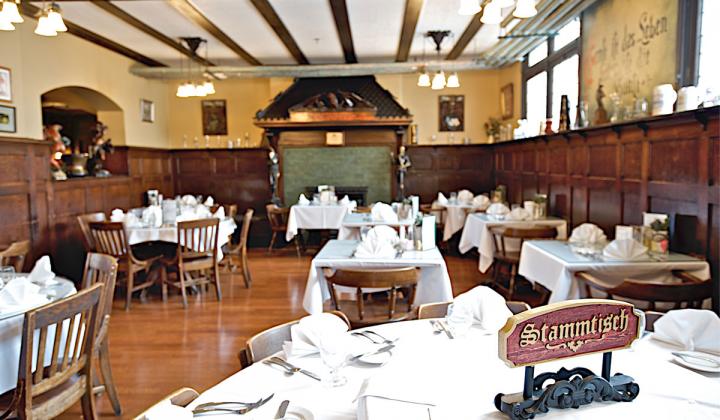
The Rathskeller has been bringing Bavarian vibes to Indianapolis since the late 19th century, but the pandemic curtailed its lively atmosphere. The property comprises a restaurant, bar, and massive biergarten, making for a diversified—and typically recession-proof—business.
But last year, The Rathskeller faced the possibility of closing—a prospect it hadn’t confronted since Dan McMichael became the proprietor a quarter century earlier.
Relief came in the form of a $50,000 donation from digital media firm Barstool Sports, which established a fund to help small businesses weather COVID-19. The money helped The Rathskeller make rent and pay staff, many of whom have worked at the restaurant for many years.
Locals also did their part to keep the business going. Once regulations permitted limited on-site dining, guests were eager to return.
“The Rathskeller has grown to become a renewed Indianapolis staple throughout the past 25 years of ownership,” special events coordinator Maddie Yoder says. “Locals and visitors have become a huge part of our Rathskeller family. Their support kept us afloat through the craziness and was the driving force of opening back up better than ever.”
Despite issuing a mask mandate and cutting capacity in half, The Rathskeller caught some flack when its biergarten reopened last August. Nothing materialized from these criticisms, and this summer promises to be busier than the previous year with a full roster of live performances and the biergarten once again welcoming canine friends on Sundays for its Dog Days of Summer series.
At press time, the restaurant was serving guests lunch indoors but still requiring masks. Things might not be completely back to normal yet, but they’re heading in the right direction.
“We are very much looking forward to restrictions loosening up,” Yoder says. “There is nothing we want more than to give everyone that comes through our space the true Rathskeller experience that we know.”
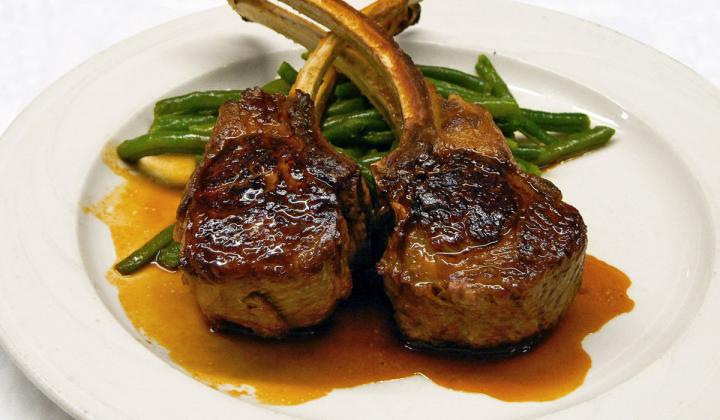
In New York City, the old sentiment, “If I can make it there, I can make it anywhere,” holds especially true for Keens Steakhouse. The restaurant has remained a Big Apple fixture for more than 130 years, first as a haven for members of an elite pipe club and eventually evolving into a fine-dining restaurant that’s famous for its mutton.
Over generations, Keens has proved, time and again, its ability to navigate uncertainty and crises of all stripes—including another viral outbreak.
“It has made all the difference to us to have been so established. Keens survived the first pandemic of 1918 and is trying hard to survive this one,” says general manager Bonnie Jenkins. “Keens is a restaurant that has generational memories for so many that it became a touchstone for both customers and staff.”
But despite its experience staring down past disasters, the steakhouse was dealt a wholly unique set of challenges when COVID-19 struck. New York’s high-population density led to especially strict and long-lasting regulations while the urban environment limited outdoor options. Keens began offering takeout and delivery but quickly realized it was no substitute for dine-in.
So the restaurant pursued other avenues, though the process was hardly smooth; the sidewalks were not wide enough to accommodate tables, and a maintenance team needed to improve the roadway structure with a floor. Not to mention, the frenetic energy of the city was the antithesis of Keens’ signature ambiance. “We felt strongly that the indoor of Keens is a special place, and the great outdoors on 36th Street was not what people expected,” Jenkins says.
But after a short respite with limited indoor dining, the restaurant had to rely solely on al fresco once again. Jenkins credits customers and staff who continued to support the restaurant—even in 28-degree weather. Eventually the same maintenance team that improved the sidewalk seating also built single-party igloos.
Now that business is returning to normal, Jenkins hopes some of the lessons of the pandemic will stay ingrained at Keens and the greater industry.
“I also hope that we have learned how to appreciate each other more and not take each other for granted,” she says. “We learned we should help each other more.”
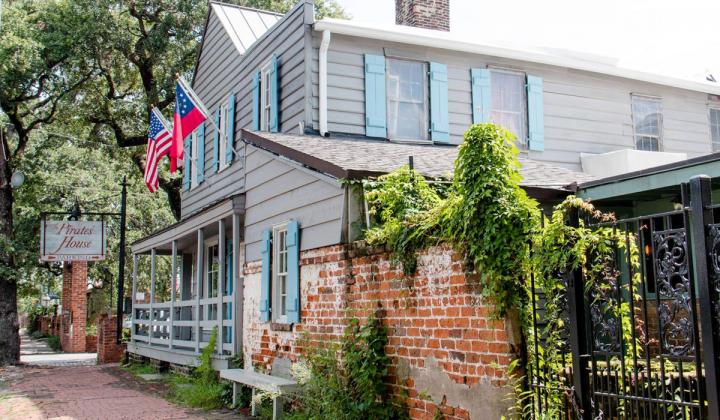
At the Pirates’ House in Savannah, Georgia, the dine-in experience has long been an interactive affair. Actors donning pirate apparel beguile guests with local tales while the restaurant’s beloved Southern Lunch Buffet draws tourists and residents alike.
Last year, both of those practices ran against sizable obstacles. The Pirates’ House closed for three months when the pandemic first struck, but even after reopening, business didn’t go back to normal. Following capacity restrictions, the restaurant had to space guests out across its multiple dining rooms, with every other table remaining empty. And while the pirates had been a quintessential part of the dine-in experience, they could not yet return.
“Their job involves wandering through the restaurant and interacting with our guests to explain the history of our building, pirate tales, ghost stories, or general Savannah lore,” director of operations Cathy Colasanto says. Staffing in other areas was heightened.
The Pirates’ House brought back its buffet, but rather than guests helping themselves, employees took over that responsibility, serving dishes cafeteria-style. Staff members were also tasked with wiping down door handles and other frequently touched surfaces. Rather than rolling lunch service right into dinner, the restaurant closed for an hour to clean.
A year later, the Pirates’ House is inching back toward normal. Civic groups are returning for meetings, and families are booking space for reunions.
“We’ve always been a destination-must for our locals to bring their out-of-town visitors to experience,” Colasanto says. “Everything is opening back up, and restaurants are making a resurgence. People want to get their lives back to normal, and dining out with friends or family is a big part of normal living.”
But some coronavirus measures will remain permanent. Thanksgiving has traditionally been the busiest day for the restaurant, but last year the Pirates’ House was unable to offer its holiday buffet due to restrictions. The restaurant could still serve Thanksgiving dishes on-site a la carte, but it bolstered business with family meal kits and holiday sides.
“That will be a new Thanksgiving tradition for us post-COVID,” Colasanto says. “We like to say, at the Pirates’ House, our greatest treasure is the food.”
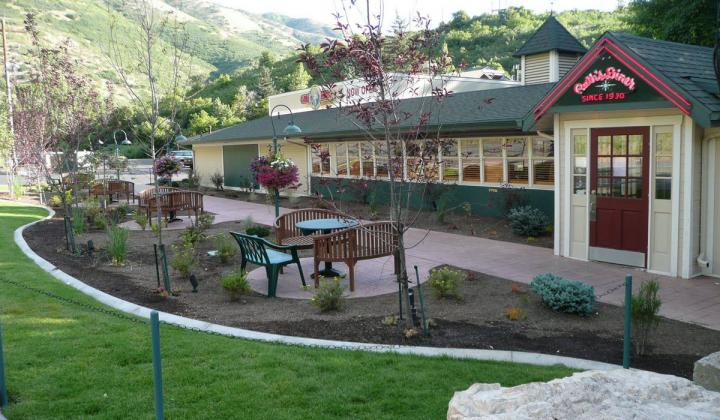
Founded by a feisty proprietor of the same name, Ruth’s Diner has been a Salt Lake City mainstay for nearly a century. Though it’s been under different management since the late 1970s, the historic diner maintains Ruth Evans’ scrappy spirit, which helped it weather the last year.
Before the pandemic, sales would steadily increase year after year. “We’ve owned it for 14 years. We’ve never had any issues with business or whatnot until last year,” says Erik Nelson, who co-owns Ruth’s Diner with his wife, Tracy.
Even with the setback, Ruth’s Diner fared much better than most. Sales were only down 30 percent—an enviable number for many sit-down operators.
In addition to its long history, Ruth’s Diner boasts an idyllic location and a space well-suited for the constraints of COVID-19. Although the restaurant is nestled in the Wasatch Mountains, it’s a short 15-minute drive to downtown Salt Lake City. Evans originally operated her restaurant in the city proper, before towing a trolley car up the mountain to serve as the new location. Ruth’s Diner has since grown to encompass multiple dining rooms and an expansive patio, the latter of which was essential during the days of dine-in restrictions. In more temperate months, the restaurant seated about 60 indoors and 200 outside. While restaurants in certain markets could get by with heaters in the winter, Ruth’s Diner opted for a hardier option, namely Quonset huts. The prefabricated structures were originally used by the military in wartime but have since been adopted for commercial use. With these huts, Ruth’s could seat about 50 people in the huts during colder months.
Although Nelson still expects 2021 sales to fall short of pre-COVID figures, the restaurant has received local and national buzz. The Salt Lake Tribune named it as one of the best patios for social distancing; Salt Lake Magazine pointed to it as a “cabin fever cure;” and Condé Nast Traveler recently spotlighted it in a weekend getaway guide.
For his part, Nelson visited other local restaurants throughout the pandemic, and he knows many guests have done the same to keep Ruth’s going strong.
“I make it a point to eat at local restaurants,” he says. “And we’ve got a real following up here. They make it a point to support us.
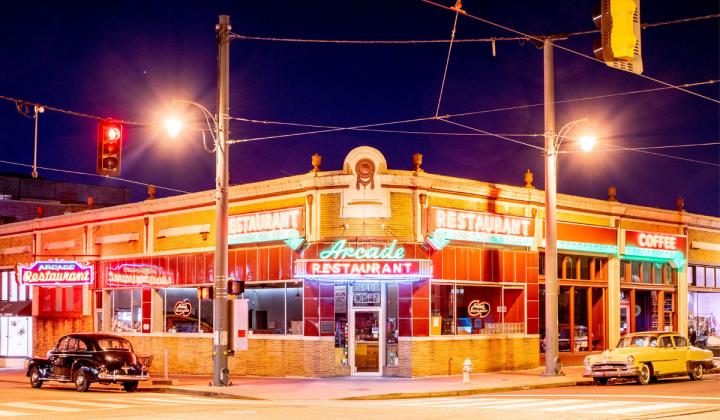
Before last year, The Arcade Restaurant, like many breakfast concepts, didn’t think foods from the earliest daypart could travel well. What’s more, it didn’t anticipate consumer demand for such dishes via takeout or delivery. For all the negative effects of the pandemic, the off-premises potential of breakfast was a revelation for many.
“We didn’t realize that people were wanting breakfast for delivery … and so that has begun a whole new business for us,” says Kelcie Zepatos, who runs The Arcade alongside her husband, Jeffrey, who is the great-grandson of the original founder.
After closing for two months when COVID-19 hit, the 100-plus-year-old restaurant reopened at a quarter capacity and began partnering with delivery providers. With simultaneous on- and off-premises business, The Arcade streamlined its back of house. The restaurant long had a coffee bar where guests could order drinks while they waited for a table during the weekend rush. Now the coffee bar has a secondary function as the pickup spot for delivery orders.
As the oldest restaurant in Memphis, Tennessee, The Arcade benefited from an outpouring of community support and solidarity.
“For example, a photographer reached out to me and said, ‘Hey, if you want me to come take pictures of your restaurant and your food to help you advertise, I would be happy to help you,’” Zepatos says. “Memphis is a small city, and it definitely has its advantages for being small because we’re a tight-knit neighborhood.”
Zepatos also worked closely with the Memphis tourism board to continue promoting the restaurant and booking travel groups in the future. As business ticks back up, The Arcade, like the rest of the industry, now faces a labor shortage, but its roster of long-time employees provides a leg-up.
Even before the pandemic, independent business owners had to go above and beyond to fill any necessary gaps, Zepatos says. It’s a lot of work, but it also sets small businesses up for a strong comeback.
“I think the people that actually own and run their businesses are going to succeed because they’re there day to day and seeing how it’s operating and working,” she says. “We have an advantage in that sense.”

